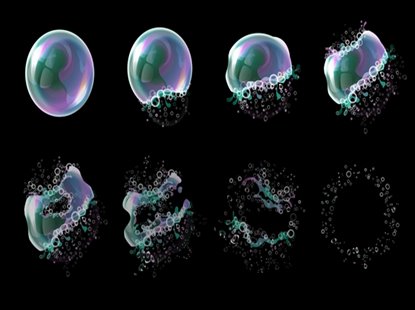Defoamers: Key Solutions for Managing Foam in Various Processes
Defoamers: Key Solutions for Managing Foam in Various Processes
Blog Article
The Role of Defoamers in Enhancing Product Quality and Performance
Defoamers offer as important ingredients that minimize this concern, making sure smoother manufacturing process while boosting the aesthetic and useful characteristics of the final items. The selection of the ideal defoamer can be crucial to achieving ideal outcomes, elevating essential concerns about formula compatibility and performance metrics that merit further exploration.
Recognizing Defoamers
Understanding the role of defoamers is necessary for preserving item quality throughout different sectors. Defoamers are chemical ingredients designed to stop the formation and minimize of foam in fluid systems, which can detrimentally influence processes such as mixing, filling up, and surface area tension. Frothing can result in ineffectiveness, item flaws, and jeopardized aesthetic appeal, making defoamers an essential element in producing operations.
In industrial applications, defoamers help to enhance item uniformity and security. For instance, in the paint and finishes market, foam can conflict with the application process and the last finish. In food and beverage production, too much foam can hinder bottling and packaging performance. The efficient usage of defoamers not only makes certain smoother production processes but additionally adds to exceptional item efficiency.
In addition, the choice and formula of a defoamer need to line up with details application needs, such as compatibility with other components, effectiveness under varying temperature and pH conditions, and potential regulatory restrictions. Eventually, recognizing defoamers' features and their importance in numerous solutions is critical for enhancing production and guaranteeing the greatest top quality final result.
Kinds of Defoamers
Defoamers can be classified right into numerous types based upon their structure and mechanism of activity. The primary kinds include silicone-based, non-silicone organic, and inorganic defoamers.
Silicone-based defoamers are amongst the most reliable, mostly as a result of their capability to spread promptly on the liquid surface area and interfere with foam formation. Their distinct chemical framework enables for premium security, making them ideal for high-temperature applications and atmospheres with varying pH levels.
Non-silicone organic defoamers, frequently made up of all-natural oils or fatty acids, are valued for their biodegradability and reduced poisoning. These are commonly used in food and beverage applications where safety and security and ecological impact are extremely important.
Inorganic defoamers, that include materials like talc or calcium carbonate, act by increasing the thickness of the liquid, consequently minimizing foam security. They are commonly made use of in industrial processes where compatibility with other products is not a worry.
Each kind of defoamer has distinctive benefits and restrictions, enabling customized services depending on the details foaming issues come across in different applications. Comprehending these differences is essential for optimizing efficiency and achieving preferred item quality.
Applications Across Industries
Various industries take advantage of defoamers to boost product quality and operational efficiency. In the food and drink field, defoamers are essential in procedures such as brewing and dairy manufacturing to prevent foam development, which can bring about inadequacies and item variance. By regulating foam, manufacturers can make sure much better yield and a much more uniform item.
In the pharmaceutical sector, defoamers play a vital duty in the formula of liquid medications, where extreme foam can hamper mixing and accurate application. Their usage aids preserve the honesty of the solutions and facilitates smoother manufacturing processes.
The paint and finishes industry additionally relies on defoamers to enhance the performance of products during application. By lessening foam, these ingredients ensure a smoother finish and enhance the visual top qualities of the end product.

Advantages of Utilizing Defoamers
While the application of defoamers differs throughout markets, their benefits continually boost item high quality and procedure performance. One considerable benefit is the decrease of foam formation during making processes, which can or else lead to production hold-ups and variances in product high quality. By minimizing foam, defoamers enable a smoother circulation of products, facilitating more reliable operations and lowering the likelihood of devices breakdowns.
In addition, using defoamers can enhance the look and appearance of end products. In sectors such as coverings, paints, and food processing, extreme foam can compromise the aesthetic aesthetics and total top quality, while the proper defoamer application makes certain a consistent surface and preferable characteristics. In addition, defoamers can add to cost savings by lowering waste throughout production and maximizing making use of raw materials (defoamers).

Selecting the Right Defoamer
Picking the right defoamer is vital for enhancing production processes and making certain item quality. The choice of defoamer affects not just the effectiveness of foam control yet also the overall performance features of the end product. Aspects to think about consist of the type of application, the chemistry of the formula, and the environmental problems under which the product will certainly be made use of.
Various industries might need details defoamer kinds, such as silicone-based, organic, or polymeric defoamers. Comprehending the compatibility of the defoamer with the primary components is essential to stay clear of negative reactions that could endanger item integrity. Additionally, the defoamer's performance in various temperature levels and pH levels should be assessed to make certain consistent efficiency.
Testing the defoamer in small-scale applications can offer useful understandings right into its efficiency and viability. Consideration of regulative compliance, especially in food, pharmaceuticals, and cosmetics, is vital in selecting a defoamer. Eventually, a comprehensive assessment of these elements will cause the choice of a defoamer that not just regulates foam efficiently yet likewise enhances the top quality and performance of the last item.
Final Thought

In final thought, defoamers are important additives that substantially boost product top quality and performance throughout numerous industries. The calculated selection and application of defoamers lead to cost financial savings, optimized source usage, and boosted customer complete satisfaction.
Frothing can lead to inefficiencies, item flaws, and endangered visual allure, making defoamers an important element in manufacturing operations.

Report this page